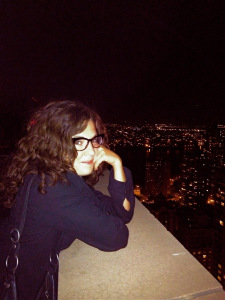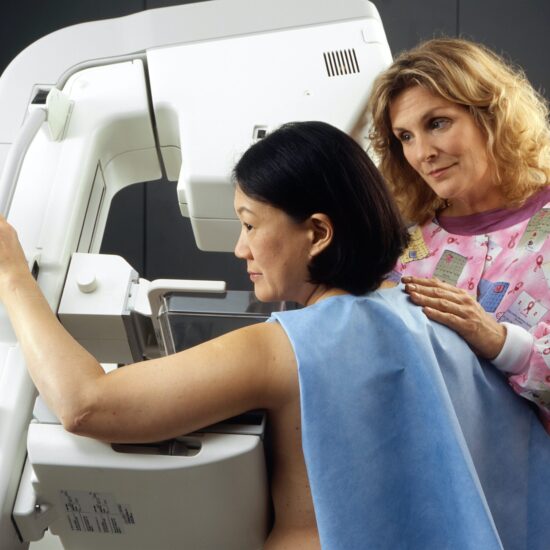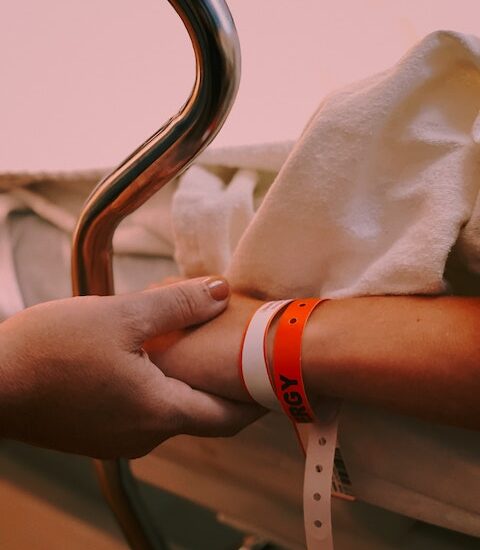
This is a guest post by Amanda Anderson, RN, BSN, CCRN, a native-Buffalonian-turned-New-Yorker, is celebrating her 6th Birthday as a MICU nurse this June. She’s currently shooting for two master’s degrees from Hunter Bellevue’s award-winning nursing school, writing with students and for herself, and dodging yellow cabs while speeding around the city on her little bike. Follow her musings here, via @12hourRN, and on her blog www.thisnursewonders.wordpress.com.

At work, sometimes I get the opportunity to change lives. Other times, I work to change deaths.
Mrs. T was dying when I walked into her life. Imminently. A 7-week aggressive course of acute cancer treatment left her body riddled with side effects and complications from a long list of interventions that never promised to cure. Everyone on the unit knew her painful stay and her family’s tireless desire to “do everything.”
During my first night as her nurse, she breathed for herself and maintained stable vital signs. Her handsome husband and loving children calmly willed her to improve. She opened her eyes to their loving voices.
I spent the first evening talking with them congenially. I learned she was a great cook and that she held her religious beliefs close to her heart. Photos of grandchildren, stories of first dates; I felt like a 12-hour member of their family.
That night, I didn’t broach the topic that I knew would become important to discuss very soon – a reality I saw the second I laid eyes on Mrs. T – that she was dying, and that we needed to decide how to manage the progression of her dying process. I had no right to start this conversation that night; it would have only lead to broken trust. Minutes prior, I was just another New York stranger.
After her family left for much-needed sleep, Mrs. T rested peacefully. But as the night turned to day, her conditioned worsened. By morning, she needed medications to sustain her blood pressure, and she labored to breathe. My trained eye saw that her death was approaching quickly, the pace of her journey accelerating toward its inevitable end.
I’ve seen this slope countless times. Some of my patients travel its path with the aid of comfort and love, leaving quietly. Many others are painfully pinned to the world by families wishing to stop death’s progression, adding lines and tubes to ward off that which can’t be cured.
As I gave report to the day shift nurse, we wondered about Mrs. T’s family. Which way would they swing? She’d likely not last the day. On my bike ride home, I prayed that my little lady and her family would come to a peaceful place while I slept.
When I returned a short 12 hours later, I was surprised to see her there in the bed. Still breathing unsupported, Mrs. T’s process had progressed during the day, along with the team’s attempts to slow it. In report, I learned that her family was still asking for aggressive care.
In the ICU, you quickly learn to prioritize based on skilled assessment of impending disaster. That night, I knew my first and most urgent task was a conversation with Mrs. T’s family. I ensured that my second patient was comfortable and stable, charted my 20:00 vitals to prove I was present, put on some lipstick, and took a deep breath.
In the room, I found the whole family. Called to Mrs. T’s side early in the day, I soon learned they felt emotionally exhausted from the team’s attempts at strong-arming them into transitioning to comfort care. Only their oncologist had sustained hope, adding yet another medication. They were still in it. They still wanted to fight.
I sat down. For over an hour, we talked like family members. I asked more about Mrs. T’s life, and her wishes when she had entered the hospital two months before. I asked how she felt about her illness, which had spanned the course of two decades. Using real-people words, not doctor words, I walked them through what would likely happen next – her shallow breathing, the rise of C02, arterial blood gases, her eventual need for a ventilator. I told them about cardiac arrests, resuscitation, vasopressors; answering each of their spoken and unspoken queries as I went along. We talked about her current mental status, and how her personality might never return after a resuscitation attempt. I told them about comfort care. They asked more questions, they cried. I almost cried.
As we talked, I assured them that whatever path they chose for her was the best one. Life only comes with one mother, one true love. That person enters life once, and leaves only once. These decisions were not ones to be forced or rushed; they would be remembered forever. Talk, think, we’ll decide as the night moves on.
When I left them, two hours of my shift had passed. I hadn’t charted one thing or given a single pill. My other patient hadn’t alarmed, but I hadn’t really listened, either. I told a co-worker I needed a minute, left the unit and stared blankly at the bathroom wall for a while. Exhaustion already?
The night progressed, and slowly, Mrs. T’s family let her go. After our talk, her condition changed exactly as I had predicted it would; her ability to exhale C02 decreased, her need for a ventilator transpired. The family said few words about their decision to move towards comfort; they very simply confirmed their decision with the doctors. A DNR/DNI order was placed. We waited together.
Mrs. T died in the light of early morning, her husband and son at her side, the river quiet below her. No codes, no extra tubes. With her family’s help, we assessed her pain throughout the night, and all agreed she didn’t seem to have any. I didn’t give her a drop of pain medicine, and when her heart finally stopped, she looked angelic. Her family, her husband especially, almost seemed relieved in their grief. Looking back, I realized that she was my most peaceful death. I’m not sure that miracles exist, but if they do, this may have been one.
My point in sharing this story is not to call attention to my nursing skills. I have led many discussions that have not ended this way. I have asked questions too soon, pushed my views insensitively, and tripped over my words countless times. My point is this: I spent two hours providing my patient with an intervention that changed the course of her life and death. My documentation of this intervention consisted of a box checked on an education flowsheet. I wrote no note, used no diagnostic code, submitted no bill. But she died a death her family was peaceful and happy with, and one that incurred minimal medical waste.
I was able to do this because I work in a hospital that promotes the practice of going above and beyond for patients. Administration frequently encourages us to sit at the bedside and chat. My manager, seeing my late-administered meds will likely not care. He knows that I can prioritize and that I work hard. My co-workers watched out for my other patient, and furthermore, I only had one other patient.
Imagine I worked on a medical floor, where 9 other patients waited for my care. 9 families had questions about the course of the day and the medical team’s decisions. 9 humans were scared, annoyed, frustrated, sick and worried. 9 lists of medications waited to be given. How could I spend two hours talking to just one of them? I couldn’t.
In my tiny opinion, the breakdown of nursing care begins when safe staffing ends. Long-standing research shows clear ties between poor staffing levels and dropping patient satisfaction, and dangerous health outcomes. With little to no federal and state regulation mandating safe staffing, or publicly available data on staffing, nurses are caught in the abysmal wasteland of unsafe practice environments. In many ways, poor staffing has reduced a vocation once centered on the art of care to a job primarily concerned with performing robotic tasks in a timely manner.
Without mandated staffing ratios, the practice of nursing will further degrade to unsafe and inartistic levels. Without the time I took to discuss Mrs. T’s course of care, her life would have likely ended in a tragic series of futile, gruesome and painful medical procedures. Her family would forever remember her death with pain that was instead replaced with peace and comfort. But I was safely staffed that night, and had the luxury to spend the time. Most nurses don’t even know what that opportunity would feel like.
Action must be taken. Tomorrow, the New York State Nurses Association (NYSNA) will lead a Safe Staffing Day of Action, culminating in a rally on the lawn of the state capitol, to show legislators that nurses are serious about staffing ratios. New York should join California, and set clear and legally-mandated staffing ratios, setting the precedent for the other 48 states to follow. Lives, and deaths depend on it.










Pingback: Some Thoughts on Safe Staffing. | This Nurse Wonders… / May 20, 2013
/
Sasha RN / May 21, 2013
As I read this blog, tears came to my eyes, you did what most nurses dream to do: Give your time without rushing, to care thorougly for your patients, and address their concerns. Too many times I hear nurses on general floors deal with 8, 9, or extreme cases 12 patient’s. Unreal right?, but it occurs at many NYC city hospitals even Magnet facilities. I too have experienced the overwhelming ordeal of juggle patients, their medication, getting admission, performing general procedures, and more. This leaves me tired.
Im grateful that I have an awesome night time. We help each other!! Legislators, need to do better and think of the patients who suffer due to poor staffing–Its unfair and unsafe. Many new nurses fear bedside nursing because of poor staffing…New York State can do better!
WISH I could attend today’s event, but I have to work and do not want to leave my team short!!!! I support any mandate that Enforces better Staffing!!!
Thank you for sharing!!!
/
Pingback: What Others Say Can Harm You | terry1954 / May 21, 2013
/
Saskia / June 13, 2013
Wow. Beautifully and eloquently told. What a good thing safe staffing is and how wonderfully you exemplified it
/
Pingback: Some Thoughts on Safe Staffing. | This Nurse Wonders / October 11, 2014
/